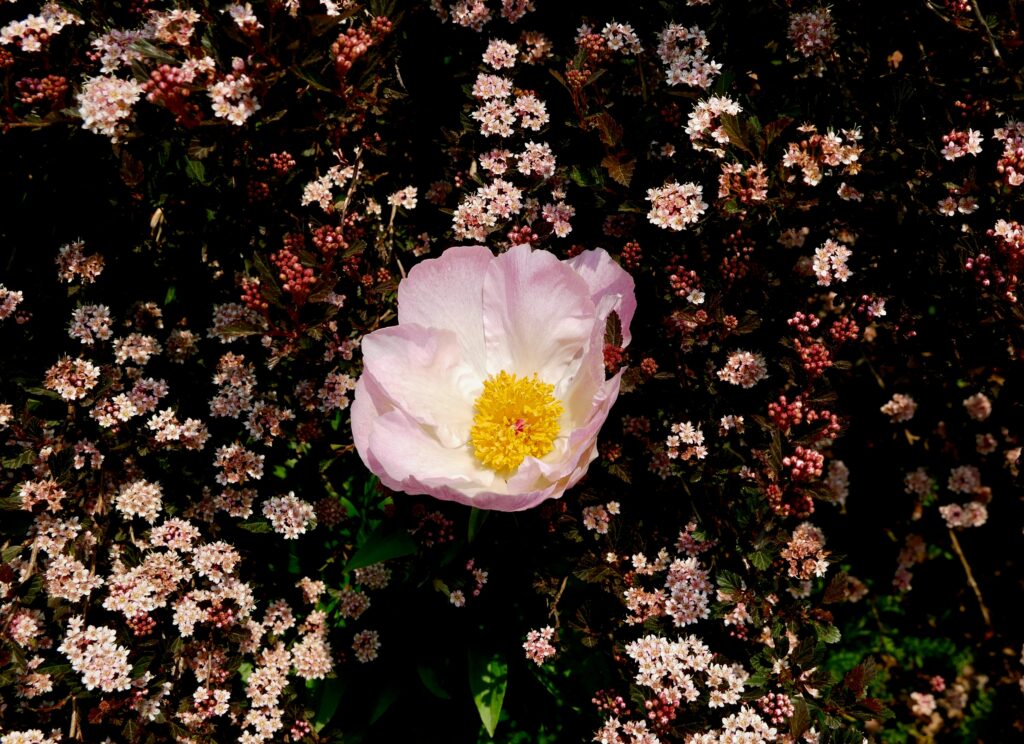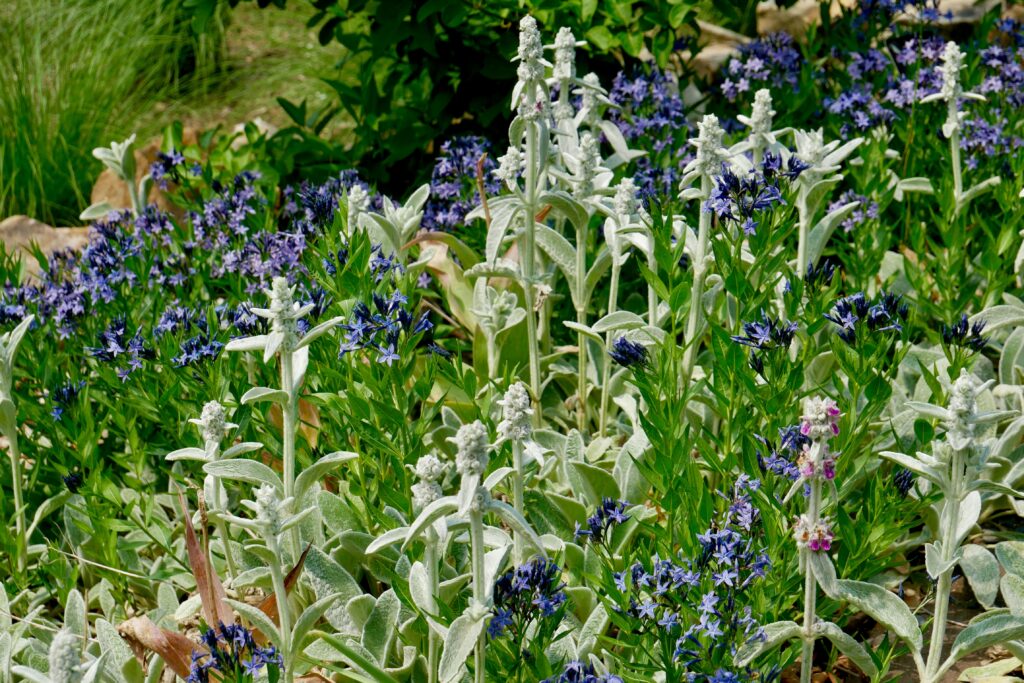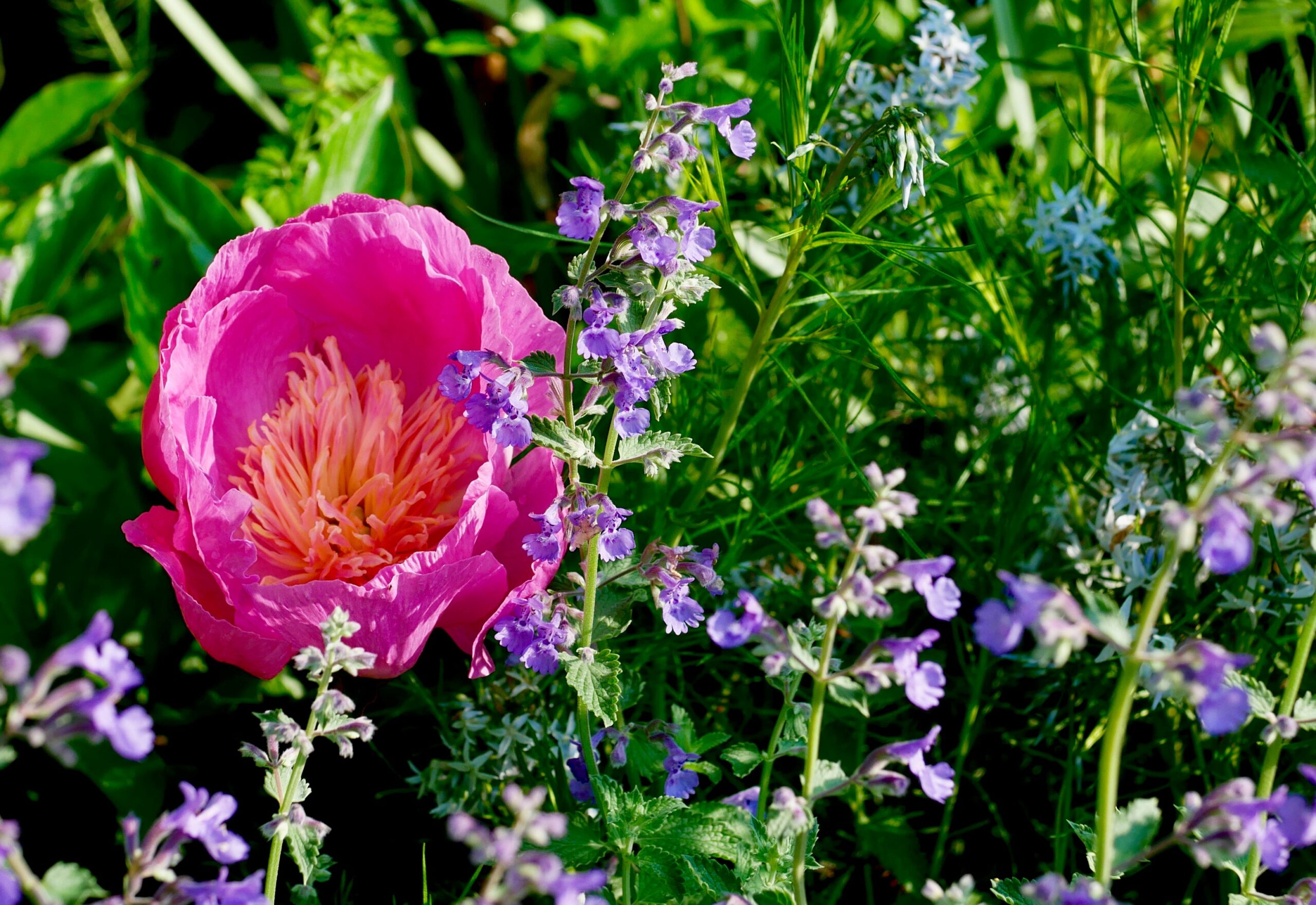By David P. Davis
Newsroom@DominionPost.com
Wild and wonderful gardens like the West Virginia Botanic Garden not only have diverse collections of plants but also combine them in ways that capture the eye. Throughout the WVBG, many flowering plants are juxtaposed in exquisite ways.
The Yagle Garden at the WVBG is noteworthy for the diversity of its plantings, which are in close proximity to each other. This garden is planted with many peony varieties that are all coming into bloom.

Peonies are great companion plants, as they come back year after year often with a few more blooms than the year before. You will find a lovely pastel Itoh peony (a cross between herbaceous and tree peony) in bloom, framed by the deep red foliage of the ninebark (Physocarpus) shrubs that are also just about to bloom. This provides a great contrast between the larger peony bloom and the clusters of small blooms on the nine barks.
In a lower area of the Yagle Garden, a lilac peony is in bloom framed by catmint (Nepeta), a member of the mint family. The catmint at the WVBG has been in bloom for a month already, providing nectar for bees and butterflies. Now, the catmint is playing its role as a great companion plant to the larger and showier blooms of irises and peony.

Another great combination can be found in a Yagle Garden bed below the Education and Event Center and includes bluestar (Amsonia “Blue Ice”) and lambs ears (Stachys byzantina). The bluestar and lambs’ ears have interwoven themselves and now form a mass of deep blue blooms and fuzzy-silvery lambs’ ear foliage. This combination is paired with other herbaceous perennials making for a wonderful spring flower show.
One last combination that pleases the eye is golden garlic (Allium moly) next to pinks (Dianthus), both now in bloom. Golden garlic is a lovely, short allium, with a bloom that includes a cluster of golden-yellow flowers. Together, the purple-pink dianthus paired with the golden garlic is truly something to admire.

I conclude this week with another allium species in bloom, the Sicilian honey lily (Allium siculum). This allium has a hanging umbel of small blooms perched on a stalk that can reach three feet in height. Like other dramatic alliums, this bloom is a must-see for its unique and subtle purple-green flowers and their unusual appearance. The Sicilian honey lily can be found in both the Yagle Garden and the George W. Longenecker Shade Garden.
Come see these interesting combinations and more at the WVBG!
David P. Davis, Ph.D., gardener at the WVBG. For visiting information, maps, and more, visit WVBG.org.





